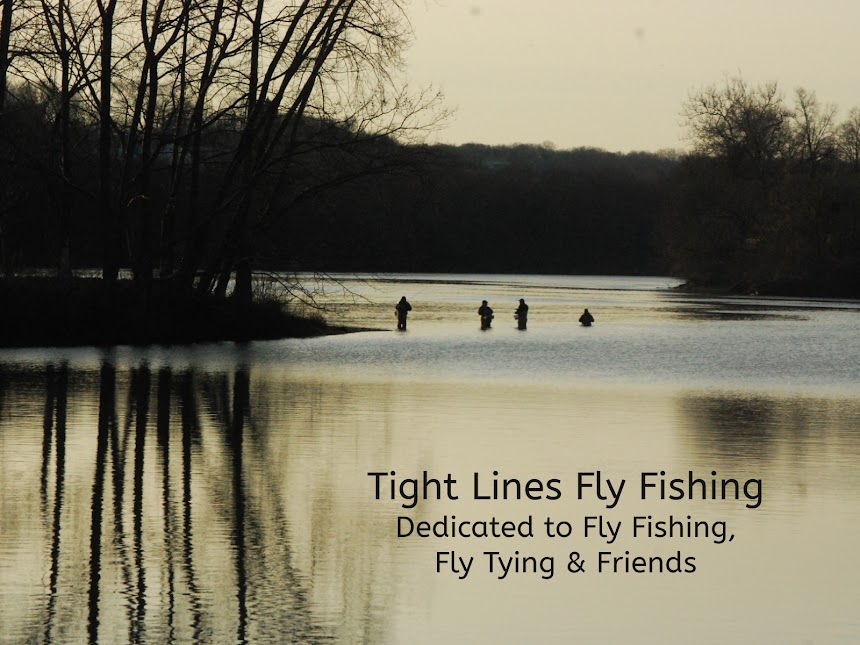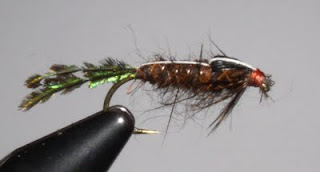Mickey Finn
Hook: Diachi 2220 Size #4 to #10 4X long streamer hook or similar (Mustad 9672).
Thread: Black.
Body: Flat Silver Tinsel. Ribbing: Oval Silver Tinsel.
Wing: Yellow over red, over yellow buck tail.
Head: Black thread.
One of the first fly’s that I ever learned to tie was a Mickey Finn. One of the easiest flies to tie, and boy does it catch trout on the Housatonic . Yellow has always been a great streamer color on the Hous. Rainbows love it.
Begin by applying a thread base across the hook shank. Cover with thread and lacquer. Tie in the oval silver tinsel at the hook bend. Bring your thread forward to the eye. Tie in the flat silver tinsel. Wrap it back to the hook bend, then reverse directions and bring it back to the eye. Tie and cut it off. Leave enough room to add a wing and form a head. Next, wrap your ribbing forward to the eye, tie and cut it off. Option: Sometimes instead of using flat and oval tinsel, I’ll make my body from silver mylar diamond tubbing. What is important is to create a slender and even body profile.
Now apply your wing. First, tie in a small amount of yellow buck tail. It should extend just a little beyond the hook bend. Make 3-4 thread wraps to secure it. Cut the excess Bucktail at an angle to ultimately form a symmetrical head. Repeat the step with the same amount of red buck tail. Finally, apply the same amount of yellow buck tail for the top of the wing. Form a head of black thread. Tie off and lacquer. Traditionally this fly has no eyes, but I have painted white eyes with a black center on some of mine. Many of my streamers I like on the sparse side. This is one of them.
Fish it with a “twitch”, slow retrieve, fast retrieve, or a “wet fly” swing. It’s great in lakes or rivers. So productive when it came out in the 1930’s, it was once called “The Assassin”. If you are just learning to tie and fly fish, this is definitely the streamer for you. Trout, small mouth bass, and large mouth bass will all succumb to this pattern. If you are a Salt Water fly fisher, this color combination is an old time tradition striper killer. Its still a great salt water fly today.
This fly can also be viewed at the Housatonic Fly Fishermen’s Association website at www.hffa.net . If you have any questions about this fly or would like to submit a pattern of The month, I can be reached by e-mail me at pdinice@frontier.com .





















